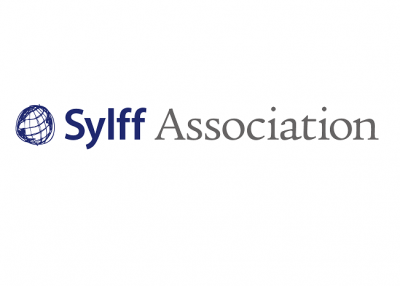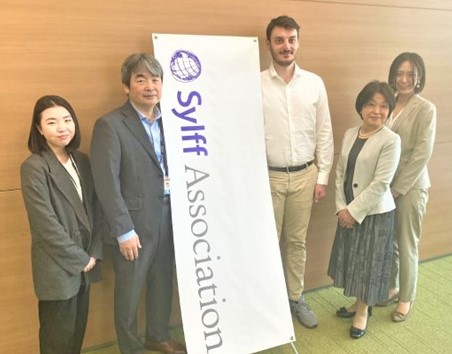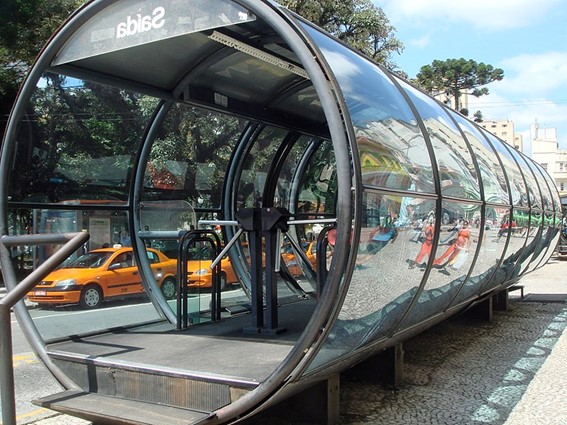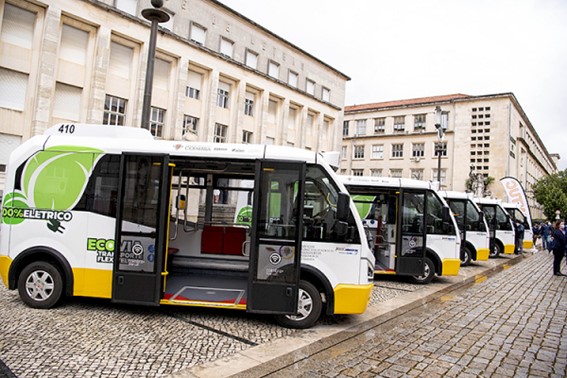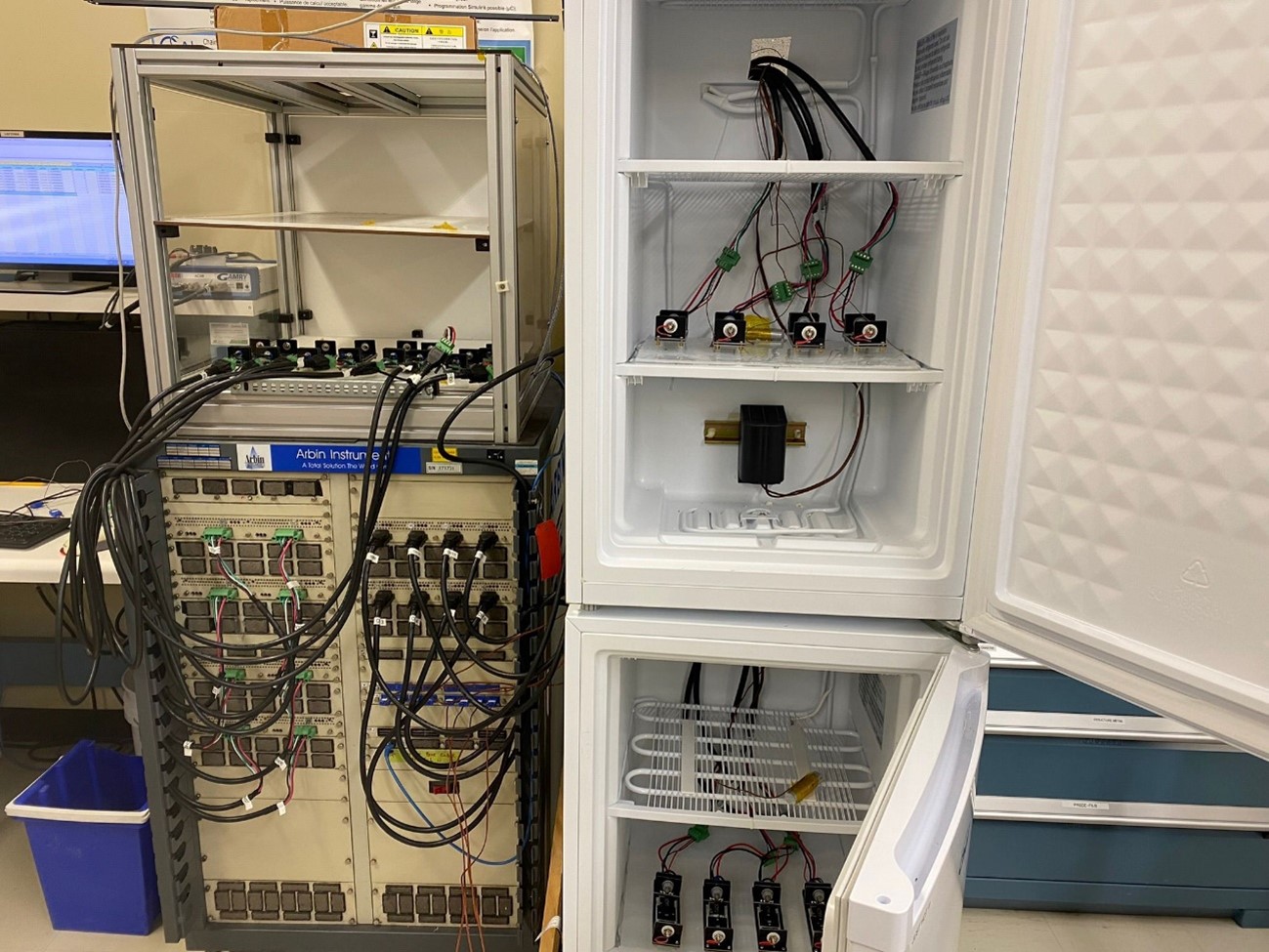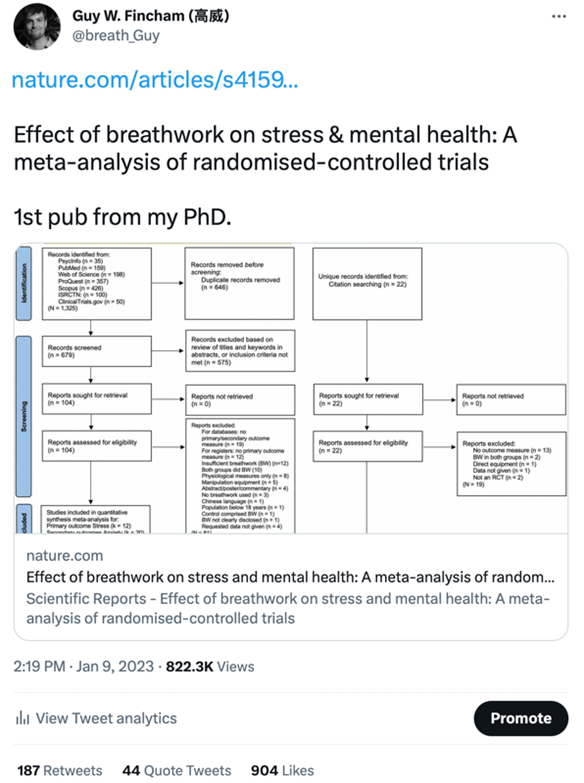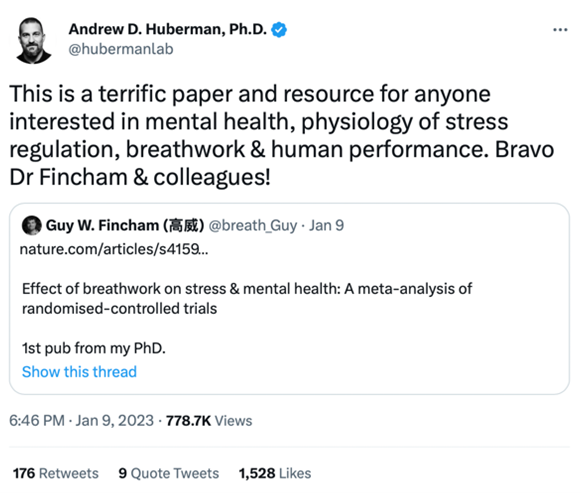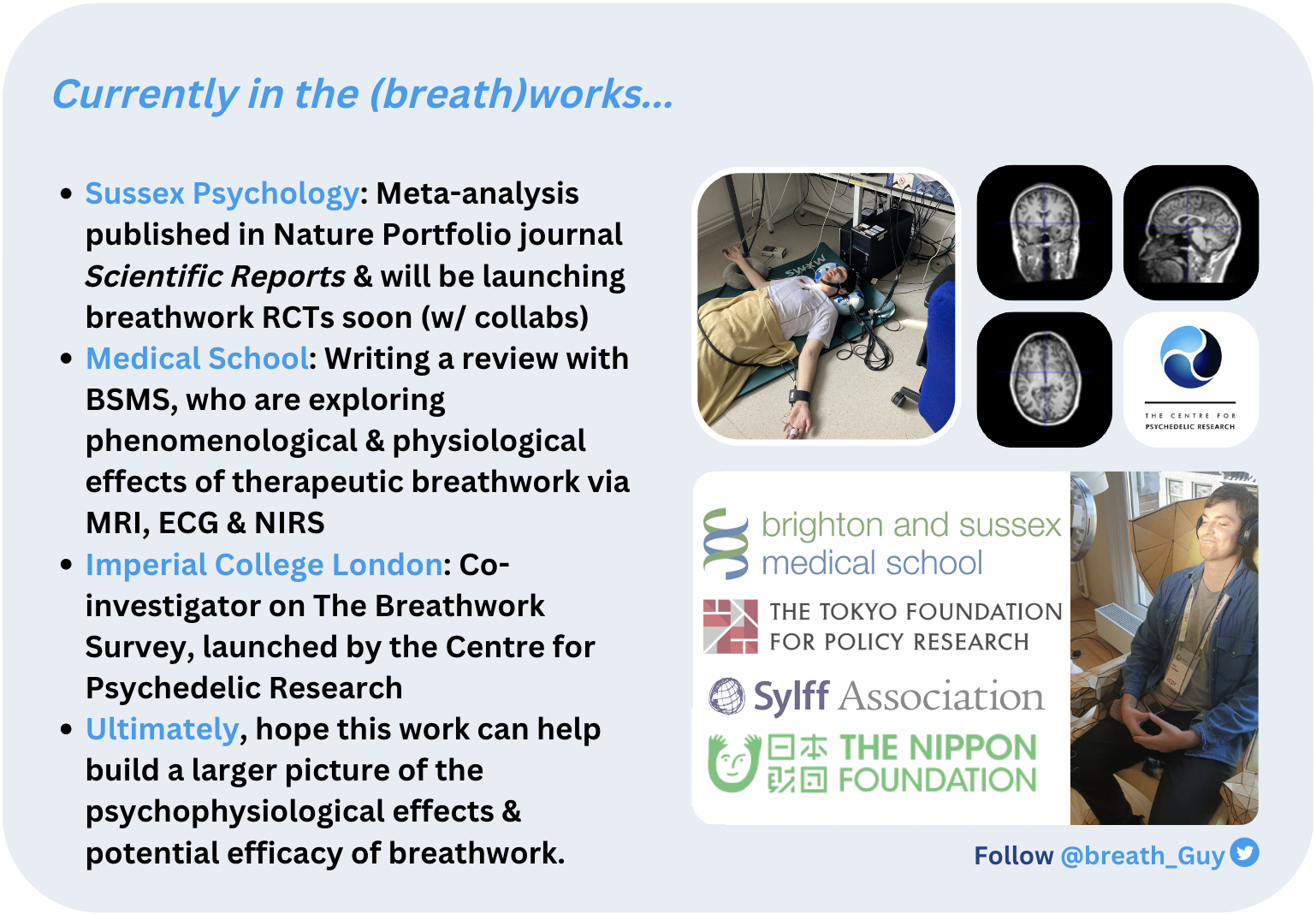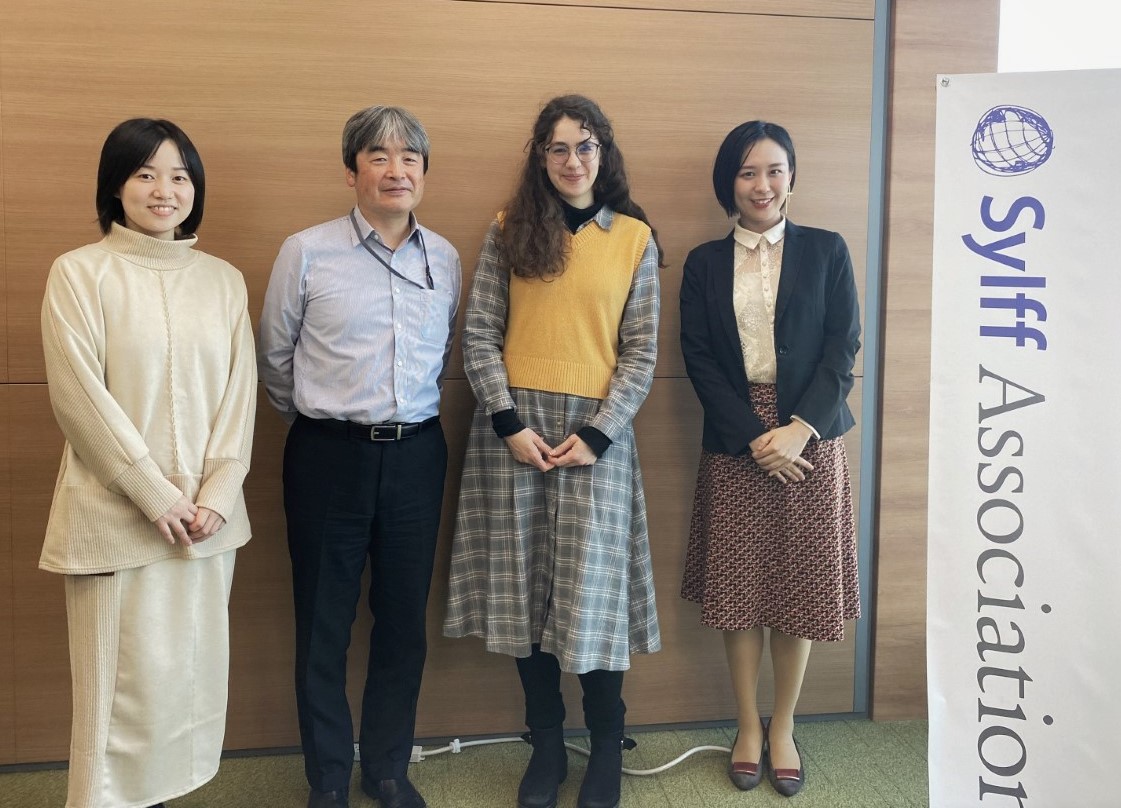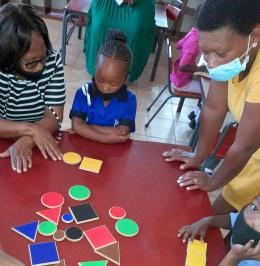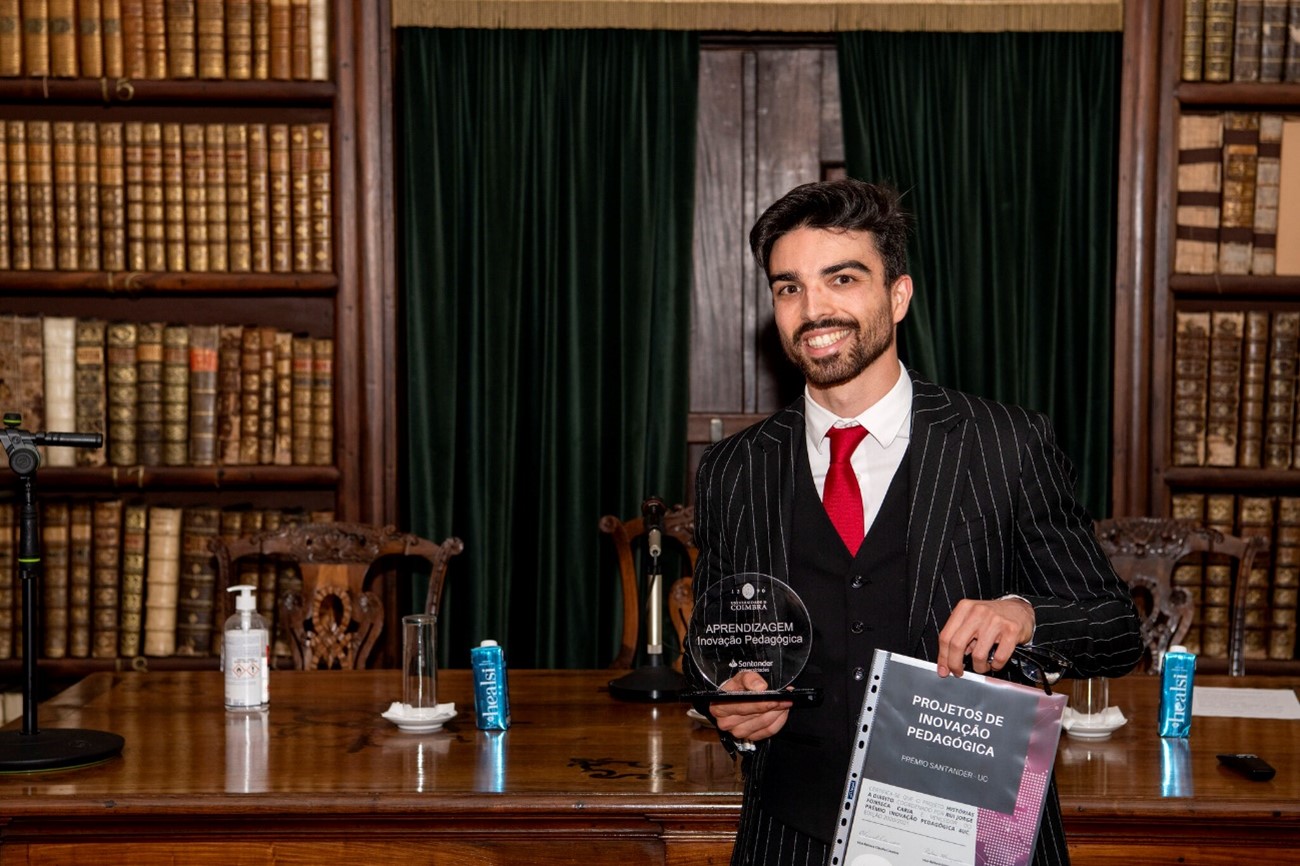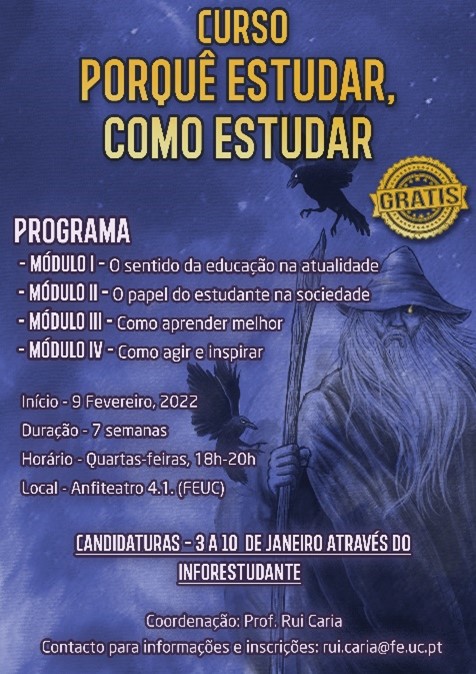Disturbing reports of sexual assault and harassment in the metaverse have raised questions about how users and society—particularly minors—can be better protected from exploitation and how offenders can be punished. To shed light on this issue, criminal law expert Sou Hee Yang (Waseda University, 2021) used an SRG grant to analyze how various jurisdictions are addressing the problem of sexual violence in the metaverse within the framework of their legal systems.
* * *
The metaverse is “a virtual space that other users can create, explore, and meet without having to be in the same space in real life” (Setiawan et al. 2022). It provides a platform where individuals can adopt diverse personas through their avatars to interact with people from around the globe.

An image generated by using the prompt, "metaverse avatars hanging out together," by Sifted via Starryai (https://starryai.com/app/create).
I had no particular interest in the metaverse, which seemed like a digital realm frequented only by tech enthusiasts, until I came across an online news article recounting a researcher’s claim that her avatar had been sexually assaulted in a metaverse (Soon 2022). I was both intrigued and puzzled by this claim. How is it possible to be sexually assaulted in a virtual world?
So I did some research and discovered that sexual violence does take place on virtual platforms in various ways; examples include groping another person’s avatar, sending unwanted, explicit messages, and approaching minors with the purpose of sexual exploitation (Frenkel and Browning 2021). The range and seriousness of such acts vary, with certain types, such as grooming minors, warranting strict countermeasures (Hinduja 2023).
There are many challenges to punishing acts of virtual sexual violence, however. First, it can be difficult to identify and prosecute the perpetrators, given the borderless nature of the metaverse. Second, sexual violence in the metaverse usually does not involve physical contact and is thus not subject to the same kind and degree of criminal punishment as real-world transgressions. It is important to recognize, though, that cyber violence can cause great psychological harm, leading to depression, anxiety, stress, and post-traumatic stress disorders (Cripps and Stermac 2018).
Being a legal researcher specializing in sex crimes, I was intrigued by these findings and wanted to explore how various countries—namely, the United Kingdom, the United States, and South Korea—are addressing this problem within the framework of their legal systems and whether they had provisions to punish sexual violence in the metaverse. More specifically, I reviewed and compared the laws related to the three most frequent forms of violence: virtual groping, sending unsolicited sexual messages, and making sexual advances toward children. My findings, based on the study, are as follows.[*]
First, users with female avatars often experience virtual groping: that is, the sexual parts of their avatars are touched without consent by another user’s avatar. Punishing such acts can be challenging, though, since sex offenses under criminal law are premised on physical contact (Cho 2022). Virtual reality headsets and haptic gloves already give users a degree of sensory feedback from events in the metaverse (Kim et al. 2022). If technology is further developed to enhance such sensations to a level closely approximating real life, virtual groping may arguably constitute “touching” for the purpose of criminal punishment.
There are two shortcomings to this argument, however, namely, that virtual sensations are still not the same as physical contact and that users can immediately stop unwanted sensations by simply removing their gear. Concerning the latter, though, it is possible for users to experience “tonic immobility”—a state of involuntary paralysis during sexual assault thought to be a natural survival reaction (Kalaf et al. 2017). Further research will be required to elucidate whether victims of cybersex crimes can also experience tonic immobility and, even if so, whether virtual groping would be subject to criminal punishment under British, US, and South Korean law.

A man with a virtual reality headset and controllers by SHVETS Production via Pexels (https://www.pexels.com/photo/a-man-with-a-virtual-reality-headset-and-controllers-7562023/).
Second, a user can be punished for harassing another user in the metaverse by sending sexual messages. In South Korea, if it can be shown that the user made comments to “arouse or satisfy his/her own or the other person’s sexual urges” and may cause “a sense of sexual shame or aversion,” the user can be punished under Article 13 (Obscene Acts by Using Means of Communications) of the Act on Special Cases Concerning the Punishment of Sexual Crimes. In the United Kingdom, acts of harassing someone by sending sexual messages in the metaverse can be punished under Section 1 of the Malicious Communications Act, but only if it can be proven that the user sent “indecent or grossly offensive” messages with the purpose of causing “distress or anxiety” to the user on the receiving end.
In the United States, where freedom of speech is more strongly protected, the threshold for penalization is higher. For example, threatening sexual messages intended to place another user “in reasonable fear for his or her safety” is punishable under Section 653.2 of California’s Penal Code. However, to apply Section 653.2, it also needs to be proven that the user sent the threatening messages with the purpose of “imminently causing that other person unwanted physical contact, injury, or harassment.” This purpose is difficult to prove for most interactions in the metaverse, as they are generally anonymous. The laws demonstrate that making extremely offensive sexual comments in the metaverse may result in criminal sanctions, but the laws vary in their nature, requirements, and purpose.
Lastly, making sexual advances toward children in the metaverse is punishable in the United Kingdom, the United States, and South Korea. For example, a British user can be punished under Section 15A of the Sexual Offences Act 2003 for sending a sexual message to a user under 16 with the purpose of “obtaining sexual gratification.” Moreover, the Online Safety Bill, currently in the committee stage in the House of Lords, if passed, will provide more robust protection against child users in the metaverse (UK Parliament 2022).
Among many forms of making sexual advances to children in the metaverse, asking children to send sexual pictures of themselves is considered a serious offense. For example, in South Korea, a man was arrested on charges of sexually grooming minors when he asked child users to send sexual pictures of themselves upon befriending them through his “charming” avatar and gaining their trust by giving presents to their avatars (Kim 2022). As in this example, the acts of approaching children, building trust, and inducing reliance with the purpose of making sexual advances at them are called “grooming” (Lorenzo-Dus and Izura 2017). Online grooming is a serious problem, particularly in the metaverse, because adult users can use their avatars to make child users believe that they are speaking with a friend their own age and thereby lower their guard. While the laws of the United States vary by state, some form of online grooming is punishable in most states. For example, knowingly seducing or enticing a minor to engage in unlawful sexual conduct can be punished under Florida Statute § 847.0135(3). Approaching children online with intent to meet them or to engage in sexual conduct is considered a more serious crime because such acts put children at real risk of sexual exploitation.
The results of this study indicate three key legal considerations. First, before considering penalization of acts of sexual violence in the metaverse, it is necessary to categorize different forms of sexual violence based on their nature and the severity of harm, both to victims and society. Secondly, it is desirable to enact laws that can at least punish some acts of sexual violence in the metaverse that causes serious harm to the victims, such as grooming of minors. Finally, there should be continued social debate on what kind of sexual conduct warrants punishment under criminal law. For example, in Japan, where I reside, there is an ongoing movement to amend sex crime laws, including the enactment of laws that punish acts of grooming and sharing of sexual images of a victim without consent. One amendment proposal was written with the participation of various stakeholders, including leaders of victim support groups, psychologists, and legal experts (Legislative Council, n.d.). Such active discussion involving various stakeholders is desirable as a means of reaching a social consensus on what the types of metaverse-based sexual violence that should be punished.
This study demonstrates how criminal laws of various countries address sexual violence in the metaverse. In addition to legislative efforts, tech companies are introducing policies to strengthen the safety of their virtual spaces. These are important measures in preventing and managing sexual violence in the metaverse. However, it should be remembered that sexual violence will inevitably manifest in virtual worlds as long as it persists in the real world. Only by addressing the problems of sexual violence in reality can they be resolved in the metaverse.
[*] This study was made possible by an SRG grant in 2022, which allowed me to access the court cases of different countries and to review academic and legal reports and articles related to sexual violence in the metaverse. I was also able to hire two competent research assistants to assist me with legal research in various languages.
References
Cho, S. 2022. “Sexual Assault in Immersive Virtual Reality: Criminal Law Must Keep Up with Technology.” Harvard Undergraduate Law Review, September 6, 2022. https://hulr.org/spring-2022/sexual-assault-in-immersive-vr.
Cripps, J., and L. Stermac. 2018. “Cyber-Sexual Violence and Negative Emotional States among Women in a Canadian University.” International Journal of Cyber Criminology, 12(1): 171. https://doi.org/10.5281/zenodo.1467891.
Crown Prosecution Service. 2023. Social Media and other Electronic Communications, March 17, 2023. https://www.cps.gov.uk/legal-guidance/social-media-and-other-electronic-communications.
Frenkel, S., and K. Browning. 2021. “The Metaverse’s Dark Side: Here Come Harassment and Assaults.” New York Times, December 30. https://www.nytimes.com/2021/12/30/technology/metaverse-harassment-assaults.html.
Hinduja, S. 2023. Child grooming and the metaverse: Issues and solutions. Cyberbullying Research Center, March 21, 2023. Retrieved April 8, 2023, from https://cyberbullying.org/child-grooming-metaverse.
Kalaf, J., E. S. F. Coutinho, L. M. P. Vilete, M. P. Luz, W. Berger, M. V. Mendlowicz, E. Volchan, S. B. Andreoli, M. I. Quintana, J. De Jesus Mari, and I. Figueira. 2017. “Sexual trauma is more strongly associated with tonic immobility than other types of trauma: A population based study.” Journal of Affective Disorders, 215: 71–76. https://doi.org/10.1016/j.jad.2017.03.009.
Kim, D. 2022. 메타버스서 미성년자 11명 성착취물 만든 30대 남성 구속. The JoongAng, April 14, 2022. https://www.joongang.co.kr/article/25063475#home.
Kim, J., Y. Kim, and H. D. Cha. 2022. Study on the sexual crime and criminal regulation in metaverse: Focusing on the direction of revision of the act on promotion of information and communication network utilization and information protection, etc. Contemporary Review of Criminal Law, no.75, 1–33. https://doi.org/10.23026/crclps.2022..75.001.
Legislative Council, Subcommittee on Criminal Law (Sexual Offenses). n.d. Ministry of Justice of Japan. Retrieved April 7, 2023, from https://www.moj.go.jp/shingi1/housei02_003011.
Lorenzo-Dus, N., and C. Izura. 2017. “Cause ur special”: Understanding trust and complimenting behaviour in online grooming discourse. Journal of Pragmatics, 112, 68–82. https://doi.org/10.1016/j.pragma.2017.01.004.
Setiawan, K. D., A. Anthony, N. Meyliana, and N. Surjandy. 2022. “The Essential Factor of Metaverse for Business Based on 7 Layers of Metaverse – Systematic Literature Review.” 2022 International Conference on Information Management and Technology (ICIMTech). https://doi.org/10.1109/icimtech55957.2022.9915136.
Soon, W. 2022. A researcher’s avatar was sexually assaulted on a metaverse platform owned by Meta, making her the latest victim of sexual abuse on Meta’s platforms, watchdog says. Business Insider, June 1, 2022. https://www.businessinsider.com/researcher-claims-her-avatar-was-raped-on-metas-metaverse-platform-2022-5.
UK Parliament (Second Reading, Online Safety Bill). 2022. April 19, 2022. Retrieved April 24, 2023, from https://hansard.parliament.uk/commons/2022-04-19/debates/F88B42D3-BFC4-4612-B166-8D2C15FA3E4E/OnlineSafetyBill.






